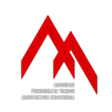Elemen Arsitektural Astana Sunda Kasepuhan Ciptagelar
DOI:
https://doi.org/10.21776/ub.ruas.2021.019.02.5Keywords:
Architectural element, Astana, Kasepuhan CiptagelarAbstract
Kasepuhan Ciptagelar is a kasepuhan who still holds the ngalalakon tradition. Based on the traces of the movement, the artifacts left are not only settlements or houses but also artifacts that are outside the settlements in the form of astana (tomb). Physically, this astana has differences from other tombs because the astana adapts to environmental conditions. This study aims to identify the architectural elements of Astana Sunda Kasepuhan Ciptagelar, to determine its characteristics. The research method is a qualitative research with descriptive analysis. The results show that the architectural elements of Astana Sunda Kasepuhan Ciptagelar are influenced by Sundanese culture, nature and the environment, with the main character is the use of natural materials around the. The basic form of plan is rectangle, with or without pangkemit. All astana have woven bamboo walls, rectangle windows and doors in several variants, roof in the form of parahu kumureb and Suhunan Jolopon. The original roof are made of palm-fibers, and the ceiling under the roof are using woven bamboo.
References
Ekadjati, E. S. 1980. Masyarakat Dan Kebudayaan Sunda. Bandung: Pusat Ilmiah Dan Pembangunan Regional.
Firmansyah, E. K. 2018. Sistem Religi Dan Kepercayaan Masyarakat Kasepuhan-Kasepuhanbanten Kidul Cisolok Sukabumi. Jurnal Pengabdian Kepada Masyarakat, 2(11), 968-971.
Hegel, G. W. F., 1975. Aesthetics, Lectures of Fine Art, Volume I diterjemahkan dalam bahasa Inggris oleh T.M. Knox. Oxford: The Clarendon Press.
Hidayat, Moch, J. 2008. Desain Makam Asta Tinggi Sebagai Ekspresi Kekuasaan Raja Sumenep (Sebuah Pendekatan Semiotika Arsitektur). Jurnal IPTEK. 11 (3):184-195.
Ilham, A. N., & Sofyan, A. Tipologi Bangunan Rumah Tinggal Adat Sunda Di Kampung Naga Jawa Barat. Jurnal TESA ARSITEKTUR. 10(1):1-8.
Irwanuddin, I. (2018). Identifikasi Genotype Rumah Adat Sumba Barat dengan Metode Space Syntax. RUAS (Review of Urbanism and Architectural Studies), 16(1), 58-70.
Krier, Rob. 2001. Komposisi Arsitektur. Jakarta: Erlangga.
Kusdiwanggo, S. 2016. Konsep Pola Spasial Permukiman Di Kasepuhan Ciptagelar. Jurnal Permukiman. 11 (1):43-56.
Kustianingrum, D., Sonjaya, O. & Ginanjar, Y. 2013. Kajian Pola Penataan Massa Dan Tipologi Bentuk Bangunan Kampung Adat Dukuh Di Garut, Jawa Barat. Jurnal Reka Karsa. 1(3):1-13.
Moleong, L. J. 2021. Metodologi penelitian kualitatif. PT Remaja Rosdakarya.
Nuryanto & Machpudin, I. 2008. Kajian Pola Kampung dan Rumah Tinggal: Warga Kasepuhan Kesatuan Adat Banten Kidul di Sukabumi-Jawa Barat. Artikel Hasil Penelitian. Bandung: Universitas Pendidikan Indonesia.
Pangarsa G.W., Ema Y. Titisari, Abraham M. Ridjal, Jenny Ernawati. 2012. Tipologi Nusantara Green Architecture Dalam Rangka Konservasi Dan Pengembangan Arsitektur Nusantara Bagi Perbaikan Kualitas Lingkungan Binaan. RUAS (Review of Urbanism and Architectural Studies), 10(2), 78-94
Rapoport, A. 1969. House Form and Culture. New Jersey: Prenrice Hall, Inc. Englewood Cliffs.
Salura, P., Clarissa, S., & Lake, R. C. 2020. The Application of Sundanese Vernacular Concept to the Design of Modern Building-Case Study: Aula barat (west hall) of Bandung Institute of Technology, West Java, Indonesia. Journal of Design and Built Environment, 20(1), 1-12.
Sofianto, K., & Falah, M. 2020. Arti Penting Situs Astana Gede di Kabupaten Ciamis bagi Masyarakat Jawa Barat. Mimbar Pendidikan, 5(1), 15-36.
Surakhmad, W. 1980. Pengantar Penelitian Ilmiah. Bandung: Tarsito.
Titisari, E. Y., Antariksa, Wulandari, L. D., & Surjono. 2018. Water Resource as Axis-Mundi: an Effort to Preserve Water Resource Sustainability. In IOP Conference Series: Earth and Environmental Science. Vol. 213 (1), p. 012005). IOP Publishing.
Downloads
Additional Files
Published
How to Cite
Issue
Section
License
Authors who publish with this journal agree to the following terms:
- Authors retain copyright and grant the journal right of first publication with the work simultaneously licensed under a Creative Commons Attribution License that allows others to share the work with an acknowledgement of the work's authorship and initial publication in this journal.
- Authors are able to enter into separate, additional contractual arrangements for the non-exclusive distribution of the journal's published version of the work (e.g., post it to an institutional repository or publish it in a book), with an acknowledgement of its initial publication in this journal.
- Authors are permitted and encouraged to post their work online (e.g., in institutional repositories or on their website) prior to and during the submission process, as it can lead to productive exchanges, as well as earlier and greater citation of published work (See The Effect of Open Access).












